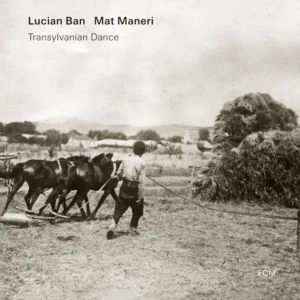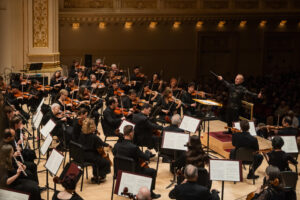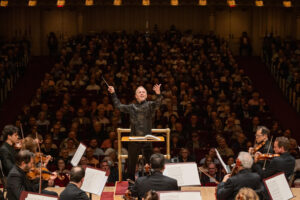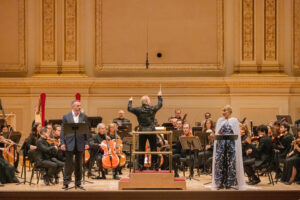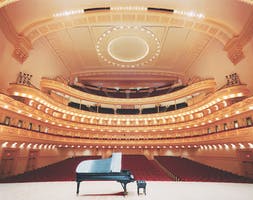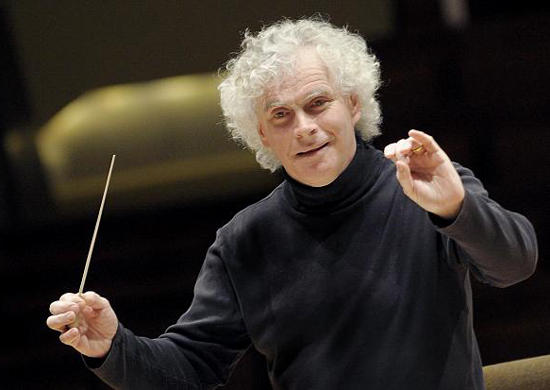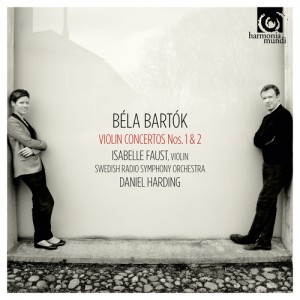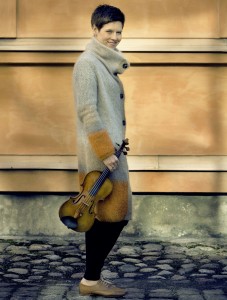Transylvanian Dance
Lucian Ban, piano
Mat Maneri, viola
ECM Records
“These folk songs teach us many things.”
Transylvanian Dance is the second recording on ECM by pianist Lucian Ban and violist Mat Maneri; the first was Transylvanian Concert (2013). As the album title suggests, the duo explores Eastern European material, specifically that collected by Béla Bartók. Ban was born in Romania and delights in the fascinating polyrhythms of this region. Maneri is well versed in the microtonal and multi-scalar aspects of folk song. These are not mere transcriptions. Maneri has described them in interviews as, “a springboard,” a reservoir of melodic and rhythmic ideas that the duo use for improvisation. Recorded live in the Romanian city Timișoara în 2022 as part of ECM’s Retracing Bartók project, Transylvanian Dance demonstrates varied and versatile reinventions of its source material.
Bartók collected folk songs in Transylvania from 1909-1917. He made a number of trips to Eastern European countries, sometimes with his friend and fellow folk song collector the composer and pedagogue Zoltán Kodály. With cumbersome recording gear and staff paper at the ready, they sought out amateur singers, particularly those of previous generations. As older people in these regions died off, so too would generations of music-making. Before it would be too late, Bartók was eager to capture and transcribe their knowledge.
Ban and Maneri revel in the music Bartók found in his trips to Transylvania. The title track is a case in point, where Ban explores a mixed meter groove while Maneri plays modal scales with glissandos and bent notes that recall the gestural vocabulary one might hear from a traditional fiddler. As the piece progresses, Maneri plays long lines that blur the polymeter, inviting Ban to add splashes of cluster harmonies and a thrumming bass countermelody. Gradually, there is a coming apart and then rejoining by the duo, a recapitulation of the opening material, and then a sideways swerve with new harmonies, inside the piano work, and a rousing viola cadenza. “The Enchanted Stag” has a very different demeanor, slow and mysterious, almost pointillist in conception.
Ban and Maneri don’t neglect the jazz tradition in which they have been steeped. “Harvest Moon” is filled with scales from folk music, but is played like a blues ballad. “Romanian Dance” is an extended workout where Ban builds upon an asymmetrical beat pattern until it becomes a rich ground from which the duo’s forceful soloing emanates. “Boyar’s Dance” uses a soft, undulating piano passage as a refrain, between which is some of the most free improvisation on the recording, building to incendiary climaxes before lapsing into softly repeated dance steps.
The recording concludes with “Make Me, Lord, Slim and Tall,” in which both players explore a sumptuous melody over a mixed meter ostinato. The piece morphs between dovetailing melodies, post-bop, and extended harmonies featuring Maneri’s microtones and elaborate changes by Ban. It ends in a denouement, angular viola riffs and dance rhythms in the piano fading away.
Fluent in folk sources and imaginative in improvising upon them, Ban and Maneri have created a compelling document. I think Bartók would be proud of them. Transylvanian Dance is one of my favorite recordings of 2024.
-Christian Carey
